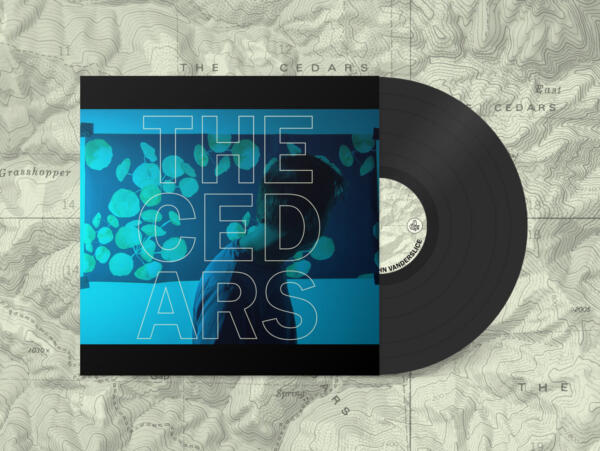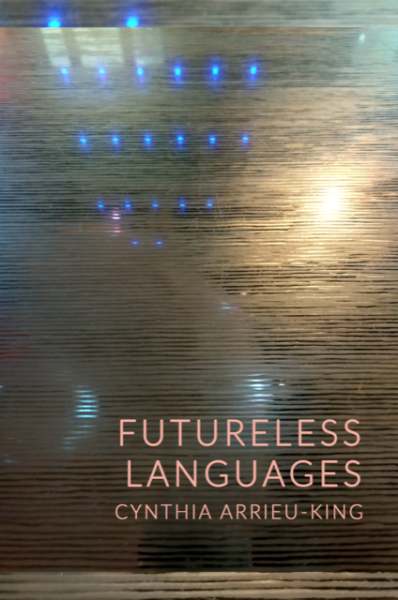
The Cedars (Native Cat Recordings, 2019. Written by John Vanderslice, James Riotto, and Rob Shelton. Produced by James Riotto and Rob Shelton)
When I started listening to this album I had trouble and still have trouble separating this album from Vanderslice’s Mom’s death. I listened through a lens of death and loss – deep depression(s) and what it is to be lost – a loneliness. When I listened to the album the first time the words escaped me. The music floated through me, ghostly, and I couldn’t grasp them. I listened to the album continuously for hours but failed to grasp most of the ‘substance’ of the album. Substance is not the right word – what I want to say is that the words and music and sounds floated through my fingers like I was grasping fistfuls of very fine sand – carrying it to the shore while the grains leak from my hand and when I reach the shore my hands are empty. The pressure of my grasp forces the grains from my hand but a loose grasp – cupping the grains – allows the wind to blow grains off the top and what is buried will drown me when I toss it in the water. That is how I felt while listening and how it felt to try & hold the album in my mind and ears.
While meditating on loss and a lostness while listening to this I was also thinking about Deleuze and Guattari’s Rhizome. The chorus to “Oral History of Silk Road 1“ (‘I pulled back and then pulled back’) repeated made me think of a slingshot that keeps getting pulled back or wound up like a trebuchet. I felt like I was being propelled both into something and away from something. Repetition often strikes me and sticks in my brain and it’s a place where I find comfort. The pulling created by that lyric also feels like digging; the chorus starts with “I went underneath, under” – and it forms a rhizomatic feel for me. We dig and then surface by imagining a self flying through the air but Vanderslice never releases the trebuchet and the listener is caught between white sheets and sheaves of dirt/burial/loss/death. Perhaps that is how the Silk Road reaches through history – it is a slingshot that keeps pulling us back into pasts that perhaps have not changed as much as we would like to imagine. Oral histories are passed through as well – through fingers or mouth or other signs representative of speech – I think – and too act as a way to bring the past to present, and to keep the past present. It is also a function of memory that is outside of a singular mind. They’re passed through many different minds continuously, each one a filter of sorts, but coming through with a truth. I also think this floats past the song into the imagination outside of the song and there are still many layers in those lyrics to feel and uncover. Much of it feels so steeped in loss, loneliness, searching, abandonment, fear, drowning. “…build an empire, kill a marriage, / snuff out your best friend / impose your will on anything too / strong to kill or neutralize / all alone on the third floor of a / second home…” (151 Rum).

I am wondering if this album is something of a futureless language of sorts too. It is life becoming more present or precious as it comes into focus through loss, sharply, acutely, painfully – an awareness. I am thinking a lot about Cynthia Arrieu-King’s Futureless Languages (Radiator Press, 2018). I had never heard of futureless languages before. When I did some research I found a study that spoke of people whose languages are futureless are better at financial planning. From my understanding futureless languages are languages that do not have a future tense but only a present tense and therefore the future is present. I might say “it will rain tomorrow” in a future-based language and in a futureless language I would simply say “it rains tomorrow”. The specter of death is present because my death will not happen in the future – my death is now. The presence, perhaps a continual ghost alongside me and the death of others is ever present. In The Cedars a death, a loss has happened and it is ever present – hope becomes something undefined. The Cedars is a futureless album.
King’s book left me in a deep sense of melancholy though I am not sure why. I was able to write into spaces that I hadn’t accessed before. It put me in a place where I could see emotions that I hadn’t recognized in a long time. Something that felt like grief but I am not sure what that grief is for. And like Vanderslice’s album – the words seemed to escape when I tried to grasp at them. It was a bubbling of emotion and a loss event that was both present and future. Loss is always present and future. Where sand becomes glass. Or the holes of the body based on all lightning strikes. Of grief or violence that doesn’t leave the body. So all we can do is fill in the holes with leaky sand… a body’s hour glass and its time which is running away from us.

I also thought of Don Mee Choi’s Hardly War (Wave Books, 2016) – a book relating the cinematic existence of Choi’s father’s life as a photographer of war – journalist and his experiences through his and through her lenses in the simplest terms. I’m not sure of the connection that I’m grasping for but something through relationships of languages and imagery. Vanderslice’s album is the sound of a sunset in which the sun sets and the night sky reveals itself only as a madly red sky – cyclic sunset failure becomes loss of night, and a foreboding of what is to come and the hope of what could transform from that failure & loss.
It also moves in a rhizomatic way in which the songs seem to bleed into one another and it becomes a strangely cartographic chaos without beginning or end since it listens like a spectre in which the lyrics become notes that slip in and out. They are a landscape of rhizomatic growth and spreading. Both the landscape of the Cedars in Sonoma, California (which the album references) and the album feel like deep alien landscapes which I think is akin to what loss feels like in the body – it is both alien and physical but also involving a kind of imperceptible scarring and fracture at cellular levels.
The geographical space of the Cedars – the alien landscape of a piece of earth that is preserved. Present and future become the same thing – collide and so the Cedars and The Cedars meet with both present and future at the same time. They are a landscape of futureless language(s). It is a representation of time – but also futurelessness. The feeling of these cedars and the sound of this album become a long pipeline without beginning or end that splits off and reconnects exponentially and eternally.
Kim Koga is the author of Ligature Strain from Tinfish Press. Her work can be found in 1913 a journal of forms, Erotoplasty, and Burning House Press. Since completing an MFA from the University of Notre Dame, her day job has moved from publishing to tech yet she continues to write, make art, and maintains a breadbox in southern California.